What's New in Autodesk Civil 3D 2025?
Our Consultant, Enrique Barriuso, provides an overview of the new features, improvements, and updates in Autodesk Civil 3D 2025.

In this blog post, our Consultant Paul Grimston provides an overview of the new features and updates in Revit 2023, covering:

Many of the new features & updates added to Revit 2023 will benefit us and help us work more efficiently with our projects. There has been a focus on improving usability, workflows and everyday functionality, which means those working on large projects carrying out repetitive tasks will notice the changes the most.
Let's take a look through some of those features and see how they might help us in our everyday workflows:
There have been some improvements in managing views and schedules with regard to s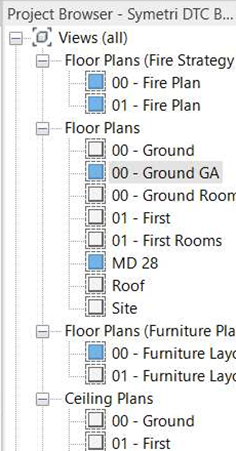 heets. The project browser now has an option to indicate which views have been placed on sheets. A square icon appears next to the view names in the project browser, and if it is filled blue, then that view has been placed on a sheet.
heets. The project browser now has an option to indicate which views have been placed on sheets. A square icon appears next to the view names in the project browser, and if it is filled blue, then that view has been placed on a sheet.
In a project with hundreds of views, knowing which ones are on sheets and shouldn’t be edited is much easier with these icons enabled.
Using the “Open Sheet” function from the right click menu, knowing that the view is already placed on a sheet, will make navigating a project much easier.
If you don’t need the icon, you can set your browser organisation to show “not on sheets” views, then they can be easily turned off via the right click menu.
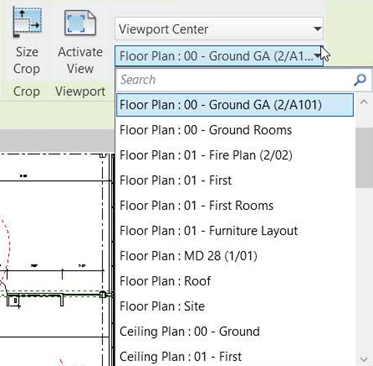 Views that are placed on sheets can now be swapped for other views. Simply select the view on the sheet and choose a different one from the list on the ribbon menu. There is an option to align the view to the origin or centre of the current view to help with different scales and crop regions.
Views that are placed on sheets can now be swapped for other views. Simply select the view on the sheet and choose a different one from the list on the ribbon menu. There is an option to align the view to the origin or centre of the current view to help with different scales and crop regions.
This can be combined with the “Duplicate Sheet” feature from 2022 to speed up creating drawings for multiple levels or repetitive drawings such as details or room data sheets.
Another new feature which I think will have a great impact on workflow is the “Filter by Sheet” option for schedules.
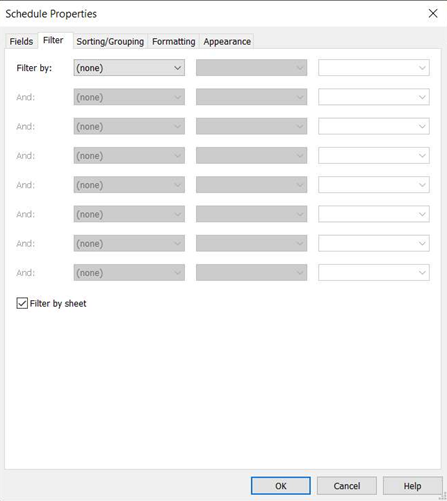
Rather than filter by the parameter values on the objects contained in the schedule, filter by sheet will look at the objects that are visible on the sheet that the schedule is placed on.
As a schedule can be placed on multiple sheets, the filter will adapt to each sheet and list only the objects visible in the views placed on each sheet.
Previously, a separate schedule would need to be created, with its filter set to match the specific sheet it will be placed on. If an equipment schedule was required for each individual room, this would mean creating an individual schedule for every room. In 2023, just one schedule will achieve the same results.
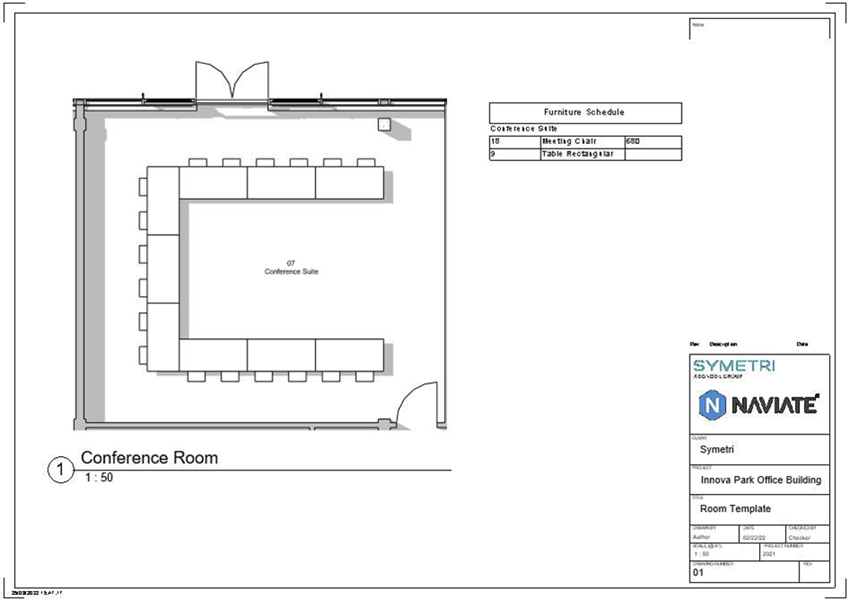
While we are talking about schedules, it is also possible to apply conditional formatting based on the Family or Type parameter of an object, making it easier to highlight individual families.
.
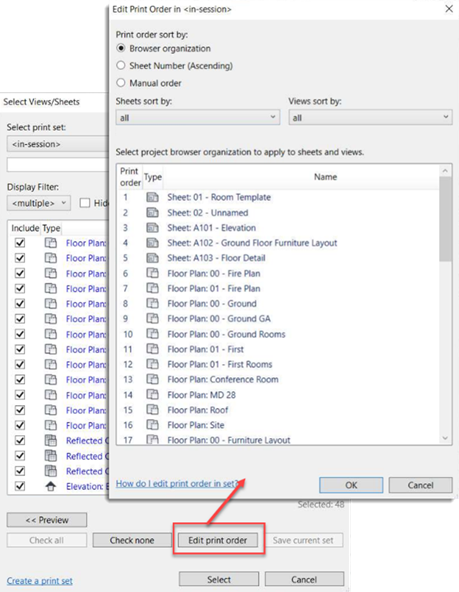 Whilst we are thinking about sheets, the sort order of printed or exported views can now be controlled. As well as the sheet number dictating the order, they can be manually ordered by selecting and dragging to re-order the list, or the browser organisation set-up can be used too.
Whilst we are thinking about sheets, the sort order of printed or exported views can now be controlled. As well as the sheet number dictating the order, they can be manually ordered by selecting and dragging to re-order the list, or the browser organisation set-up can be used too.
This means that parameters used to control the sheet order and grouping in the project browser, can now be used to control the print sort order too.
The measure tool has been now enabled for 3D views. It was always a little frustrating having to find a section or plan to measure the model, more so when we could place dimensions in 3D but not use the measure tool! A little bit of frustration is now released as the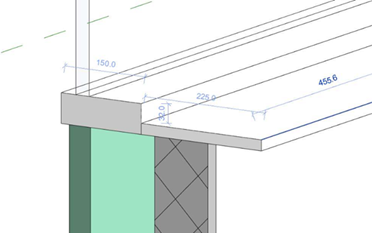 measure tool can now be used in any view, 2D or 3D. Don’t forget to change the temporary dimension text size in the options to make it more readable.
measure tool can now be used in any view, 2D or 3D. Don’t forget to change the temporary dimension text size in the options to make it more readable.
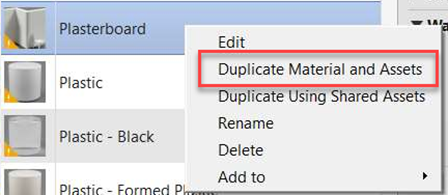 Previously when duplicating materials, the assets would not be duplicated and would remain shared between the existing and new material. This meant many people would edit the render appearance asset, not realising they had affected multiple materials that shared the asset. So, in 2023 the option to duplicate both the material and its assets has been added.
Previously when duplicating materials, the assets would not be duplicated and would remain shared between the existing and new material. This meant many people would edit the render appearance asset, not realising they had affected multiple materials that shared the asset. So, in 2023 the option to duplicate both the material and its assets has been added.
This will make those accidental edits a thing of the past and save the extra clicks to duplicate the assets individually. The option remains to duplicate with shared assets if required.
An option to have imported or linked CAD models cut with the view settings has been included. Once a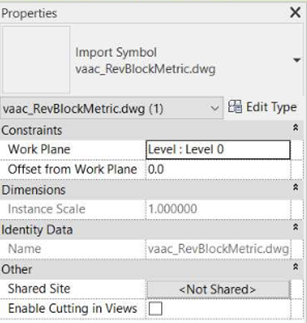 model is linked, a check box in its instance properties can be used to enable cutting in views.
model is linked, a check box in its instance properties can be used to enable cutting in views.
This will make it easier to collaborate and coordinate with others not using Revit, as plans and sections will show the relevant section of the CAD model to match the Revit cut plane and view range settings.
This feature has the potential to change some longstanding workflows and source of frustration. Groups and linked models now have standard parameters applied and the ability to add custom parameters. These parameters can also be tagged and included in schedules.
A common workflow is to use groups for apartments or bathroom and kitchen layouts. Now, in 2023, those groups can have information associated with them through the new parameters. This enables them to be tagged and scheduled as objects in the model, assigning apartment numbers, locations, and data to the group rather than individual families inside the group.
As cloud-based collaboration and remote working become ingrained, the ability to access data from anywhere is expected. One minor issue that has been solved with 2023 is the location of image files for use as material textures and decals. The path for these files now supports the use of cloud-based paths such as the Autodesk Construction Cloud.
There have also been improvements in performance for working with large models. At the time of writing, I’ve not had the individual details of these other than to say there are 20+ performance improvements. Needless to say, any improvement in performance is a welcome addition given the size of projects many of us work on every day.
Overall, Revit 2023, especially when combined with the 2022.1 features, does have many worthwhile new features and improvements. Revit continues to evolve and is addressing some of those long-standing frustrations. It still has room for improvement, but this release is a step in the right direction. I think the Filter by Sheet and the ability to add Parameters and Tag Groups will have the biggest impact, although being able to sort the print order for PDFs will save a lot of time for some people too.
For more information on Revit, please visit our product page or contact us.
